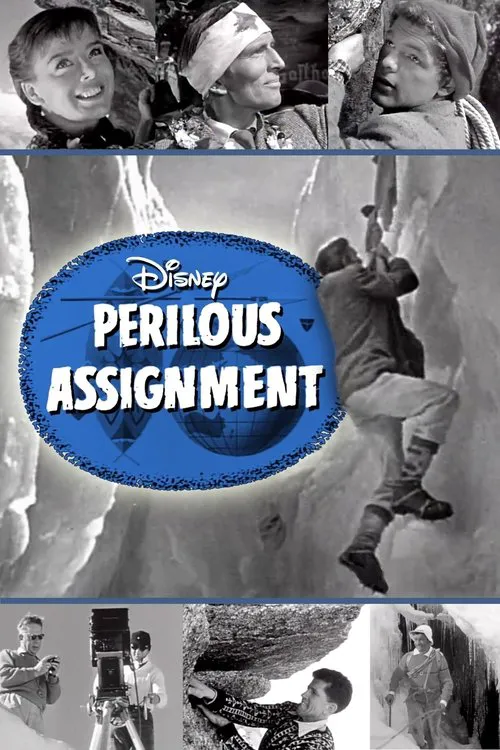Perilous Assignment

あらすじ
In the 1950s, Walt Disney was on the hunt for his next major cinematic endeavour. He had already established himself as a master of animation, bringing beloved tales like Snow White and Pinocchio to life on the big screen. However, with the advent of live-action films, Disney saw an opportunity to venture into uncharted territory and captivate audiences with the real-world adventures of everyday people. His sights were set on adapting James Ramsey Ullman's novel, Banner in the Sky, a story inspired by the true tale of the first ascent of the Matterhorn, one of the most formidable mountains in the Swiss Alps. Disney was drawn to the subject matter not only for its historical significance but also for the chance to push the boundaries of filmmaking. He wanted to capture the raw beauty of the mountain landscapes and the unrelenting spirit of the people who dared to conquer them. To bring this ambitious project to life, Disney knew he needed the expertise of someone who had spent their entire life navigating the treacherous peaks of the Alps. He turned to French mountain guide Gaston Rébuffat, a legend in his own right, for guidance. Rébuffat's credentials were impressive – he had spent decades scaling the steepest cliffs and most inhospitable terrain imaginable. His reputation as a master guide preceded him, and Disney was eager to learn from him directly. The two met, and it was clear that Disney was captivated by Rébuffat's dedication to the craft. He saw an opportunity not only to film the making of his next movie, The Third Man on the Mountain, but also to collaborate with one of the most skilled mountain guides in the world. Disney's vision for the film went beyond mere promotion; he wanted to tell a story that would educate and inspire audiences. He sought to share the struggles and triumphs of those who dared to venture into the unforgiving world of high-altitude climbing. To achieve this, he tapped Rébuffat's extensive knowledge of the mountain ranges. Together, they conceptualized a narrative that would take the audience on a thrilling journey, following the story of a young climber as he tackles the treacherous terrain of the Matterhorn. As filming for The Third Man on the Mountain commenced, Disney spared no expense in recreating the authentic experience of high-altitude climbing. Rébuffat was instrumental in ensuring the accuracy of the film's depiction of climbing techniques, and his own ascents of steep cliffs were documented for the movie. The French guide was particularly keen on sharing his expertise with Disney, who was eager to grasp the intricacies of navigating the unpredictable world of high-altitude mountain climbing. The climactic scenes of the film showcased the unforgiving power of nature, with Rébuffat's expertise lending an air of authenticity to the on-screen action. The scenes featuring Rébuffat and his client filming the ascent of Mont-Blanc were particularly breathtaking, as the duo navigated near-vertical cliffs with ease and precision. The footage captures the breathtaking beauty of the mountain landscape, an undeniable testament to Rébuffat's mastery of his craft. Through his collaboration with Rébuffat, Disney managed to create a film that was both a thrilling adventure and a nuanced exploration of the human spirit. The Third Man on the Mountain stands as a testament to the power of cinematic storytelling, transporting audiences to the remote and unforgiving world of high-altitude climbing. As the curtain closed on the film's release, Walt Disney and Gaston Rébuffat had created something truly remarkable – a film that would captivate audiences for generations to come and cement the status of both men as pioneers in their respective fields.
レビュー
おすすめ




